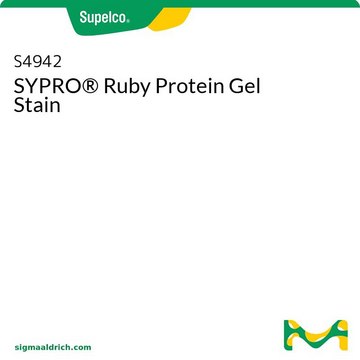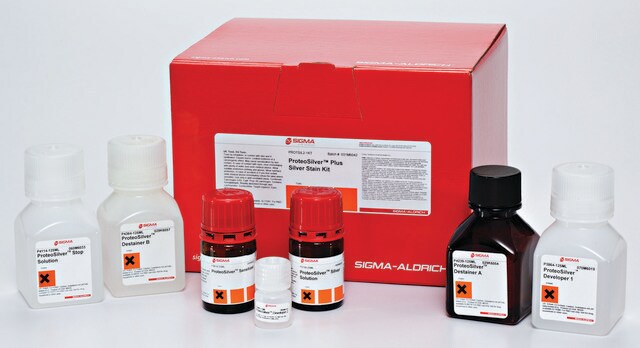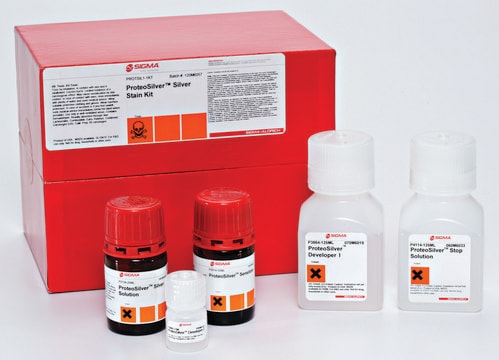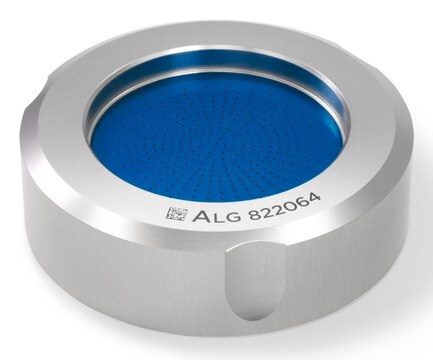S5692
SYPRO® Orange Protein Gel Stain
Sinonimo/i:
SYPRO® dye, protein gel stain
About This Item
Prodotti consigliati
Durata
≥6 mo. (when stored desiccated and protected from light at room temperature, 4 °C or 20 °C.)
tecniche
protein staining: suitable
Fluorescenza
λex 300,470 nm; λem 570 nm
Descrizione generale
SYPRO Orange is:
- Highly sensitive. The stain can detect 1 to 2 ng of protein per minigel band, making it more sensitive than Coomassie Brilliant Blue or silver staining.
- Rapid. Staining is complete in less than one hour
- Simple. After electrophoresis, the gel is stained, rinsed and photographed; no fixation or destaining steps are required
- Compatible with standard laboratory equipment. Stained proteins can be visualized with a standard 300 nm UV transilluminator or laser scanner.
- Cost-effective. Staining with SYPRO Orange is less expensive than silver staining and requires less time.
- Low protein-to-protein variability. The dye interacts with the SDS coat around the protein, giving more consistent staining between different types of proteins compared to Coomassie or silver staining.
- Selective for proteins. SYPRO Orange detects proteins as small as 6.5 kDa and does not stain nucleic acids or lipopolysaccharides. It does stain glycosylated proteins.
- Broad linear range of detection. The fluorescence intensity of the stained bands is linear with protein quantity over three orders of magnitude (a much broader range than either Coomassie or silver staining).
Applicazioni
Avvertenza
Note legali
Prodotti correlati
Codice della classe di stoccaggio
10 - Combustible liquids
Classe di pericolosità dell'acqua (WGK)
WGK 3
Punto d’infiammabilità (°F)
188.6 °F - closed cup
Punto d’infiammabilità (°C)
87 °C - closed cup
Scegli una delle versioni più recenti:
Possiedi già questo prodotto?
I documenti relativi ai prodotti acquistati recentemente sono disponibili nell’Archivio dei documenti.
Articoli
To meet the great diversity of protein analysis needs, Sigma offers a wide selection of protein visualization (staining) reagents. EZBlue™ and ProteoSilver™, designed specifically for proteomics, also perform impressively in traditional PAGE formats.
Protocolli
Introduction to PAGE. Learn about SDS-PAGE background and protocol for the separation of proteins based on size in a poly-acrylamide gel.
Il team dei nostri ricercatori vanta grande esperienza in tutte le aree della ricerca quali Life Science, scienza dei materiali, sintesi chimica, cromatografia, discipline analitiche, ecc..
Contatta l'Assistenza Tecnica.








